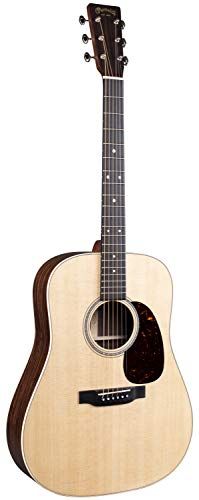

Review and analysis
The Martin D-16E acoustic-electric guitar is a mid-range model from the iconic American guitar manufacturer Martin, blending modern appointments and playability with the heritage of a historic guitar brand. The D-16E has a solid wood tops but with laminated back and sides, making it an accessible and affordable option in Martin's catalog of all-solid wood guitars.
With its acoustic-electric features and comfortable modern neck profile, the D-16E aims to appeal to both traditional acoustic players and those looking to amplify their instrument for live performance. The model offers great Martin tone and playability while remaining within reach of intermediate players and gigging musicians. Though not a top-tier Martin, the D-16E carries the Martin badge and DNA at a reasonable price point for a hybrid acoustic-electric.
Body Style and Design
The Martin D-16E features a classic dreadnought body shape, which produces a bold, projected sound. Dreadnoughts are known for their wide lower bouts, sloped shoulders and deep bodies, which provide volume, bass response and projection.
The back and sides of the D-16E are made from solid mahogany, which contributes to the guitar's warm, resonant tones. Mahogany is a popular tonewood that strikes a balance between brightness and low end, allowing both the trebles and bass to come through. The combination of the dreadnought body with mahogany back and sides makes this an excellent guitar for rhythm playing or solo accompaniment.
The dreadnought body style has been popular for acoustic guitars since the early 20th century. First developed by the Martin Guitar Company, it was designed to produce a loud, booming sound perfect for live performances. Many iconic acoustic guitarists like Bob Dylan, Neil Young and Johnny Cash played dreadnought style Martins. The wide body provides enhanced bass response and projection compared to smaller bodied guitars.
While the dreadnought body has deep roots in acoustic guitar history, some modern players prefer a slightly smaller option. The Yamaha FG800J NT features a concert body style, which is slimmer and less deep than a dreadnought. The concert shape strikes a balance between volume/projection and comfortable playability. It produces balanced tone across the tonal spectrum, allowing fingerstyle players to highlight intricate melodies and chord voicings. The FG800J NT has a solid sitka spruce top and nato back and sides, an affordable alternative to mahogany with a focused midrange tone. The smaller concert body brings out the FG800J NT's clarity and articulation.
Top Wood - Solid Sitka Spruce
The D-16E features a solid Sitka spruce top, which is prized by acoustic players for its balanced and clear tone. Sitka spruce is lightweight and responsive, with excellent resonance across the tonal spectrum. These characteristics allow it to emphasize the guitar's midrange frequencies, resulting in very articulate and focused sound. Sitka spruce is also quite durable, able to withstand the rigors of frequent playing while retaining its vibrant acoustic properties. Compared to other spruce varieties, Sitka offers enhanced volume and projection, making it a popular choice for stage and studio use. The solid spruce top provides the D-16E with excellent tonal nuance and clarity.
Smooth and Satin Neck
The Martin D-16E features a hardwood neck with a smooth satin finish. This gives the neck a very comfortable feel that allows for fast, fluid playing. Unlike some acoustic-electrics that have thicker, clubbier necks, the D-16E has a nice slim profile that makes it easy to wrap your thumb around for chords. The smooth satin finish also means your hand glides easily up and down the neck when soloing. The neck join is a mortise and tenon design that provides excellent stability and resonance transfer to the body. Overall the neck feels great for a wide range of playing styles from strumming to intricate fingerpicking.
The Martin D-16E is an excellent acoustic-electric guitar for players looking for versatile tone options. The solid Sitka spruce top and mahogany back and sides provide a balanced and articulate acoustic voice, while the Fishman electronics accurately capture that tone when plugging in. This guitar feels great to play too thanks to its comfortable neck profile and smooth satin finish. Whether on stage or in the studio, the D-16E delivers impressive acoustic and amplified performance.
For guitarists wanting a high-quality acoustic-electric in the mid-price range, check out the Fender 971752022. This guitar features a solid spruce top with mahogany back and sides, giving it a rich and resonant acoustic voice. The slim neck profile is comfortable and fast, while the built-in Fishman electronics accurately convey the guitar's natural tone. The Fender 971752022 provides great amplified sound and stage-ready features like a cutaway and tuner, all for an affordable price. If you're looking for an acoustic-electric that punches above its weight without breaking the bank, don't overlook this excellent option from Fender.
When shopping for an acoustic-electric guitar, you'll want to consider a few key factors. First, look at the tonewoods used, as these have a big impact on the overall acoustic sound. Solid wood tops like spruce are best for volume, articulation, and response. Back and side woods like mahogany contribute to a balanced midrange and pleasant overtones. The electronics are also an important consideration, as you want a pickup and preamp that accurately captures the nuances of the guitar's natural acoustic tone.
You'll also want to evaluate the guitar's playability by checking the neck shape, width, and material. Many acoustic-electrics feature slim, comfortable necks that make playing easier. The nut width impacts comfort as well, so choose a width based on your playing style. Finally, examine hardware like the bridge and tuners. Quality hardware improves intonation and tuning stability.
By choosing a guitar with top-notch tonewoods, electronics, and playability features, you can get an acoustic-electric that sounds amazing unplugged and amplified. Brands like Martin, Taylor, and Fender all make excellent acoustic-electrics across a wide range of budgets. Try out some different models to find the right balance of tone, comfort, and features for your needs.
When looking for a quality acoustic-electric guitar, the Fender 971752022 is an excellent option to consider. This guitar features a solid spruce top and mahogany back and sides for warm, balanced tone. The slim neck profile is comfortable for playing chords and soloing, while the built-in Fishman electronics accurately capture the guitar's natural acoustic sound. Some additional features that make the Fender 971752022 stand out are its rosewood fingerboard and bridge, forward-shifted scalloped X bracing, and die-cast chrome tuners. This guitar comes equipped with a hard case for safe transport and storage. Players praise the Fender 971752022 for its comfortable feel, great acoustic sound, and quality electronics. While not as inexpensive as some beginner models, it provides professional features and tone at an accessible price point. For those seeking an acoustic-electric with traditional styling and Fishman electronics, the Fender 971752022 is definitely worth checking out.
When shopping for an acoustic-electric guitar, you'll want to consider your budget, playing style, and tonal preferences. Solid wood tops like spruce project sound loudly while layered woods produce a more balanced tone. Electronics from trusted brands accurately capture the nuances of the acoustic sound. Neck width and finish impact comfort and playability. Smaller bodied guitars are better for fingerstyle while larger dreadnoughts excel at strumming. Carefully evaluate which features are most important for your needs. Try out different models in person whenever possible. This allows you to get a true sense of sound, feel, and comfort. Take your time selecting a guitar that inspires you to keep playing for years to come. Investing in a quality acoustic-electric can take your music to the next level, whether jamming with friends or performing live.
When shopping for an acoustic guitar, it's important to have realistic expectations at each price point. High-end models from prestigious brands offer premium woods, electronics, and appointments. However, very affordable guitars often cut corners that sacrifice tone, playability, and durability. Striking the optimal balance between quality and cost comes down to identifying the must-have features for your playing style and musical needs. Focus first on solid wood for the top, as that most directly impacts volume and resonance. Also evaluate neck width and finish for playability. Electronics and cosmetics can be upgraded later but the foundation needs to be solid. Construction techniques like scalloped bracing patterns also affect tone. Don't assume a high price tag means an excellent instrument. Take time to research brands and specific models that get consistently positive reviews for sound and reliability. Patiently trying many guitars in person is ideal for determining what feels, plays, and sounds best. The right acoustic-electric guitar is out there for every budget. Focus on the essentials and you'll find a guitar you love for years to come.
Choosing between an acoustic and acoustic-electric guitar depends on a few considerations. Acoustics produce unamplified sound using the guitar's natural resonance. This makes them ideal for practice, jam sessions, and small venues. Acoustic-electrics add pickups and preamps to amplify and shape the acoustic sound through an external system. This allows them to play larger venues, with effects, and in ensemble settings. Acoustic-electrics cost more but provide greater versatility. Evaluate your current and future performance scenarios. Solo players who want pure acoustic sound may be content with a regular acoustic. Those who play with bands or effects should consider an acoustic-electric. Try out both types in person to hear the difference. Also consider body styles like dreadnoughts which accentuate low end, versus smaller bodied guitars better suited for fingerpicking. Weigh if you need amplification now or can upgrade later by adding a pickup. An acoustic combined with a detachable soundhole pickup provides a lot of flexibility. No matter which you choose, go for the best construction quality you can afford. This will reward you with better sound as you grow into the guitar's capabilities.
When shopping for an acoustic guitar, deciding between a brand new instrument versus a used model is an important consideration. New guitars offer the latest designs, materials, and electronics. They have no existing wear and come with a manufacturer's warranty. However, new instruments command higher prices. Used guitars provide big savings and value. Vintage models can possess a maturity and richness of tone that only comes with age. However, used instruments reflect their past ownership. Inspect them closely for repairs, cracks, and neck/fret wear. Try out used models thoroughly. Deal only with reputable guitar shops that service what they sell. Consider new "factory second" models which provide discounts for minor cosmetic flaws. Weigh the importance you place on cost, condition, warranty, and newness. Set a maximum budget then patiently seek out the nicest guitar possible within that range. Try before you buy. Seek a seamless neck joint, smooth frets, no buzzing. The right acoustic is out there at the price point that fits your needs. Invest wisely and you'll enjoy making music for years to come.
When evaluating acoustic guitars, construction and materials significantly impact the instrument's sound and playability. Solid wood tops like spruce or mahogany vibrate freely for better projection. Layered or laminated tops use less desirable woods but allow for more affordable pricing. Tonewoods like rosewood or ebony provide density and brightness. Mahogany offers balanced tone while maple brightens treble response. Examine the bracing patterns inside the guitar body, as scalloped or hand-carved braces improve resonance. High quality tuning machines enable stable tuning while quality bridges transfer vibration to the top. Neck and fretwork should feel smooth and consistent up and down the fretboard. Inspect joints between neck and body for tight seamless construction. Beyond materials, also evaluate body style. Larger dreadnought and jumbo sizes project loudly while concert and parlour guitars offer focused mids and treble. The tonal qualities and design of the instrument should align with your playing style and musical needs. Take time to research construction elements that affect sound. Then play as many guitars in your price range until you find "the one" that sounds and feels just right.
Choosing the right acoustic guitar strings can breathe new life into your instrument. Consider lighter gauge strings for easier bending and strumming. Heavier strings provide louder volume yet can be tougher on fingers. Phosphor bronze strings have a bright lively sound. Silk steel strings offer a smoother feel. Coated strings last longer. Explore different material combinations and gauges to experience their unique tones and playing qualities. Be sure to get the proper strings for your specific guitar. Install a fresh set of quality strings. Then take time to recalibrate the truss rod for proper neck relief and reset intonation. As strings age, restore brightness by cleaning them with a polishing cloth. Rotate through several sets to find your favorite strings. Remember lighter strings may buzz if the neck isn't properly adjusted. Record how each set impacts tone, playability and longevity. You'll be surprised how new strings can motivate you to pick up and practice more on your existing guitar. Find the right strings for your style and you'll enjoy playing even more.
When shopping for an acoustic guitar, it's essential to identify the features that matter most for your needs and budget. Keep these tips in mind:
- Solid wood tops offer better sound projection and volume
- Quality tonewoods like mahogany or spruce affect resonance
- Neck width and finish impacts playability and comfort
- Electronics accurately capture acoustic sound and allow amplification
- Construction techniques like scalloped bracing patterns improve tone
- Inspect used instruments closely for repairs, cracks or fret wear
- Try guitars in person to evaluate sound, feel and comfort
- Focus on essentials like wood quality over cosmetics
- Invest wisely in the best guitar you can afford
Taking the time to identify your "must-have" features will pay dividends in finding the right match. Patience, research and hands-on testing lead to long-term satisfaction. Choose a guitar you connect with that inspires you to keep playing and improving. Let your musical passion guide you to the perfect acoustic or acoustic-electric that fits your style.
Fretboard and Bridge
The Martin D-16E features a smooth and fast ebony fretboard and bridge. Ebony is prized by acoustic guitar makers for its hardness, durability, and ability to produce bright tone and crisp note articulation. The hardness prevents indentations from forming in the fretboard from long-term play. Ebony's tight porous structure also prevents the absorption of oils and grime from a player's hands, keeping the fretboard smooth and fast.
The sleek ebony bridge transfers the strings' vibrations efficiently into the top producing excellent volume, projection and sustain. Its dense mass also results in strong, tight bass and excellent tonal balance overall. The ebony's crisp high-end paired with the mahogany body produces the Martin D-16E's clear, balanced tone.
Many guitarists prefer ebony over rosewood for its bright tone that cuts through the mix. The ebony fretboard and bridge contribute greatly to the Martin D-16E's articulate sound and impressive projection. This all-ebony appointment makes the D-16E feel slick and fast while providing excellent tonal transfer.
Hardware
The Martin D-16E features quality hardware that gives it stability, playability, and accurate intonation.
The guitar has chrome enclosed tuners that keep the strings securely in tune while protecting against corrosion and rust. Enclosing the tuning machines preserves tuning accuracy.
It also comes equipped with a bone nut and saddle. The bone nut facilitates precise string spacing at the neck, while the bone saddle helps transfer string vibrations to the top wood for optimal resonance. The bone nut and saddle are denser than plastic, resulting in more sustain and a clearer, brighter tone. The bone also holds its integrity better than synthetic materials, maintaining the guitar's tone over years of playing.
The quality hardware components on the Martin D-16E provide stable tuning, excellent intonation, sustain, and tone. The chrome tuners, bone nut and saddle make this an excellent playing and sounding guitar.
Electronics
The Martin D-16E acoustic-electric guitar is equipped with Fishman Sonitone electronics, which include an under-saddle transducer and soundhole-mounted preamp with volume and tone controls.
The Fishman Sonitone system is known for its natural and balanced acoustic tone, preserving the inherent sound of the instrument. The under-saddle pickup captures the guitar's organic resonance and string vibration. The preamp allows you to easily control the volume and tone for amplified situations. No need for extra pedals or EQ.
Overall, the Fishman preamp and pickup combination delivers excellent amplification and natural acoustic sound reproduction. Many musicians prefer the transparent tonality of Fishman electronics over other acoustic guitar pickup systems. It's a great fit for this Martin dreadnought guitar.
Sound
The D-16E produces a balanced tone that's great for fingerpicking and strumming alike. The solid mahogany top and back generate a warm, rounded sound with pleasant overtones. There's enough punch in the low mids to provide a solid rhythmic foundation when strumming, while the crisp highs allow melodic lines to shine through clearly when fingerpicking.
The tight Sitka spruce bracing helps the D-16E project very well, allowing it to hold its own in jam sessions or on stage. Many players find it has the perfect blend of warmth and articulation for playing folk, country, blues, and even some classic rock. The electronics accurately capture the acoustic tone, making this a versatile guitar suitable for gigs or recording.
Pros
The Martin D-16E acoustic-electric guitar has a lot going for it in terms of playability and tone.
Playability
The D-16E features a comfortable hand-rubbed neck that makes it very enjoyable and easy to play. The low action and slim neck profile provide smooth playability up and down the fretboard. Whether strumming chords or playing single note melodies, most guitarists find the D-16E to be a very playable instrument right out of the box.
Balanced Tone
This guitar produces a balanced tone across the tonal spectrum - nice warm lows, pronounced mids, and clear ringing highs. The mahogany back and sides paired with the solid Sitka spruce top help the D-16E deliver a very balanced and versatile acoustic tone. It handles various playing styles and genres well.
Fishman Electronics
The Fishman Sonitone electronics on the D-16E accurately amplify the guitar's natural acoustic tone. The undersaddle piezo pickup combined with the preamp and built-in tuner make this an excellent choice for live performances or recording situations where amplification is needed. The Fishman system captures the nuances of the D-16E's acoustic tone very nicely.
Cons
The Martin D-16E comes with a high price tag, which may be out of reach for some players looking for an acoustic-electric in this range. While the quality and craftsmanship justify the expense to an extent, those with more limited budgets may want to consider some of Martin's lower priced models.
Additionally, players looking for high acoustic volume and projection may find the D-16E lacking in those areas, especially when compared to Martin's higher end offerings like the D-18 or D-28. The smaller body style and moderate depth means this guitar doesn't produce as loud or full an acoustic voice as Martin's largest models. The D-16E works well for amplified situations or more intimate acoustic playing, but some bluegrass flatpickers or heavy strummers may ultimately want a bigger guitar.
So while the D-16E offers an excellent balance of playability, electronics, and classic Martin tone in a nice mid-level package, those seeking maximum acoustic volume and projection may want to try out some of Martin's full-size dreadnought models before deciding. Overall though, the D-16E offers professional features and quality at a reasonable price point for its class.
More Information
| Features of Martin Guitar D-16E Rosewood with Gig Bag, Acoustic-Electric Guitar, Sitka Spruce and East Indian Rosewood Construction, Gloss-Top Finish, D-14 Fret, and Low Oval Neck Shape Natural | |
|---|---|
| Price | $1999 |
| Brand | MARTIN |
| Back Material | Rosewood |
| Body Material | Rosewood |
| Color Name | Natural |
| Fretboard Material | Rosewood |
| Item Model Number | 10D16E-01 |
| Item Weight | 11.5 pounds |
| Neck Material Type | Mahogany |
| Number of Strings | 6 |
| Product Dimensions | 47 x 20 x 9 inches |
| Scale Length | 25.4 Inches |
| String Material | Nickel |
| Top Material | Rosewood, Mahogany Wood, Spruce Wood |
| Color | Natural |
| Fretboard Material Type | Rosewood |
| Hand Orientation | Right |
| Neck Material Type | Mahogany |
| Scale Length | 25.4 Inches |
| String Material Type | Nickel |
| Top Material Type | Rosewood, Mahogany Wood, Spruce Wood |
You may be interested in
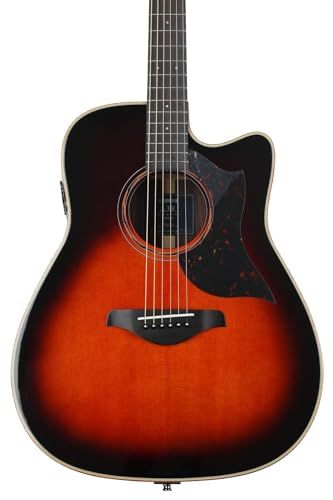 | 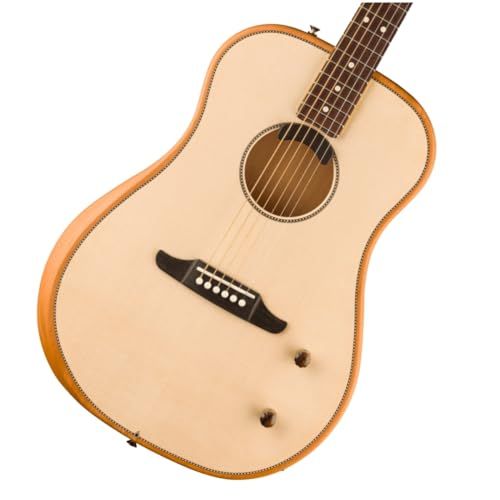 | 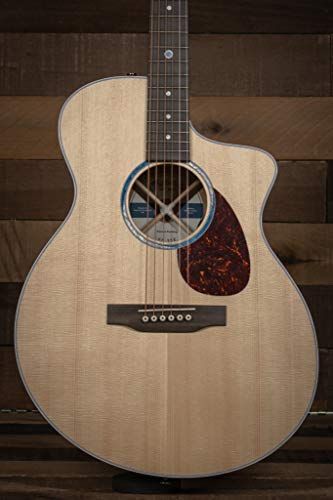 |  | 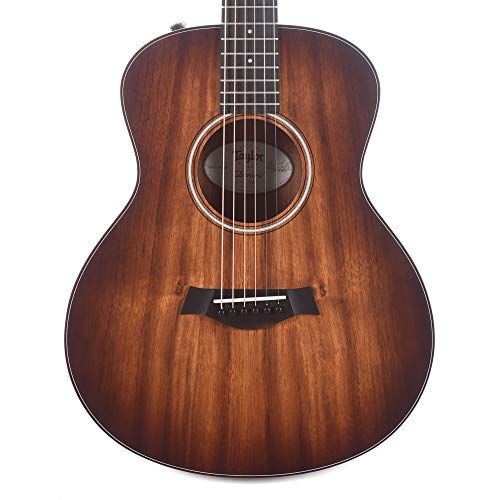 | 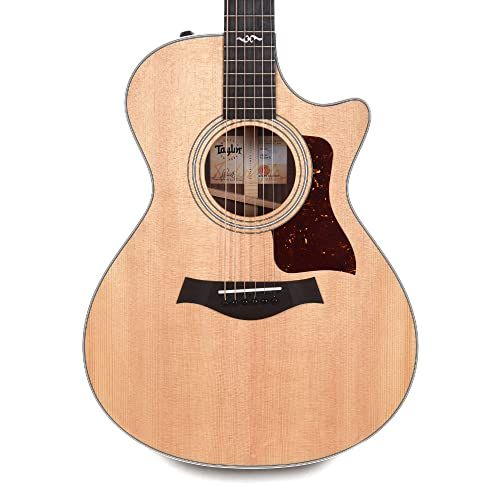 | |
|---|---|---|---|---|---|---|
| Model | Yamaha A3R TBS | Fender HIGHWAYDREADNATRW | Martin 11SC13E-01 | Fender 0972213260 | Taylor GS Mini-e Koa Plus ES2 FG02016011001751084 | Taylor 412ce-R V-Class A405001111002090000 |
| Brand | Yamaha | Fender | MARTIN | Fender | Taylor | Taylor |
| Back Material | Rosewood | - | Koa Fine Veneer | Mahogany Wood | Layered Koa | Rosewood |
| Batteries | 2 AA batteries required. | - | - | - | 1 9V batteries required. | - |
| Body Material | Rosewood | - | Koa Fine Veneer | Mahogany | Koa | Rosewood |
| Color Name | Tobacco Sunburst | Natural | Natural | Shadow Burst | Shaded Edgeburst | Natural |
| Fretboard Material | Rosewood | Rosewood | Ebony Wood | Rosewood | Ebony Wood | Rosewood |
| Guitar Bridge System | Fixed | - | - | - | - | - |
| Guitar Pickup Configuration | Piezo | - | - | S-S | - | - |
| Item Model Number | A3R TBS | HIGHWAYDREADNATRW | 11SC13E-01 | 0972213260 | FG02016011001751084 | A405001111002090000 |
| Item Weight | 6.8 pounds | 15.55 pounds | 22 pounds | 14 pounds | 9 pounds | 20.5 pounds |
| Neck Material Type | Mahogany | Mahogany | Wood | Mahogany | Mahogany | Rosewood |
| Number of Strings | - | 6 | - | - | - | 6 |
| Product Dimensions | - | 47.2"L x 17.3"W x 7.1"H | - | - | - | - |
| Scale Length | - | - | 25.4 Inches | - | 23.5 Inches | 24.88 Inches |
| String Material | - | - | Nickel | Bronze | Nickel | - |
| Top Material | Spruce | Spruce Wood | Koa Wood, Spruce Wood | Rosewood | Mahogany Wood, Ebony Wood, Koa Wood | Rosewood, Mahogany Wood, Ebony Wood, Spruce Wood |
| Color | Tobacco Sunburst | Natural | Natural | Shadow Burst | Shaded Edgeburst | Natural |
| Fretboard Material Type | Rosewood | Rosewood | Ebony Wood | Rosewood | Ebony Wood | Rosewood |
| Hand Orientation | Right | - | Right | Right | Right | Right |
| String Material Type | - | - | Nickel | Bronze | Nickel | - |
| Top Material Type | Spruce | Spruce Wood | Koa Wood, Spruce Wood | Rosewood | Mahogany Wood, Ebony Wood, Koa Wood | Rosewood, Mahogany Wood, Ebony Wood, Spruce Wood |
| Price | $1019.99 | $999.99 | $1599 | $1199.99 | $1199 | $2799 |
Alternative Products of Martin Guitar D-16E Rosewood with Gig Bag, Acoustic-Electric Guitar, Sitka Spruce and East Indian Rosewood Construction, Gloss-Top Finish, D-14 Fret, and Low Oval Neck Shape Natural

Yamaha 6 String Series A3R Acoustic-Electric Guitar-Rosewood, Tobacco Sunburst, Dreadnought Cutaway TBS

Fender Highway Series Dreadnought Acoustic-electric Guitar - Natural

Martin SC-13E Acoustic-Electric Guitar

Fender Acoustasonic Player Telecaster Acoustic Electric Guitar, with 2-Year Warranty, Shadow Burst, Rosewood Fingerboard, with Gig Bag

Taylor GS Mini-e Koa Plus ES2 wGig Bag
